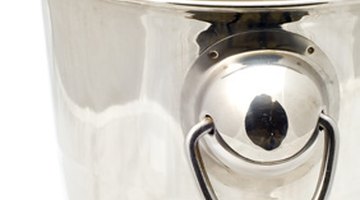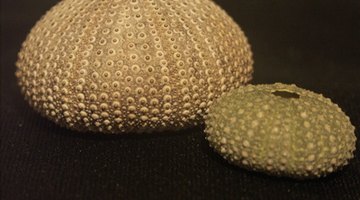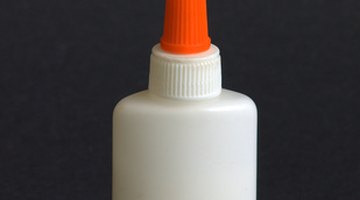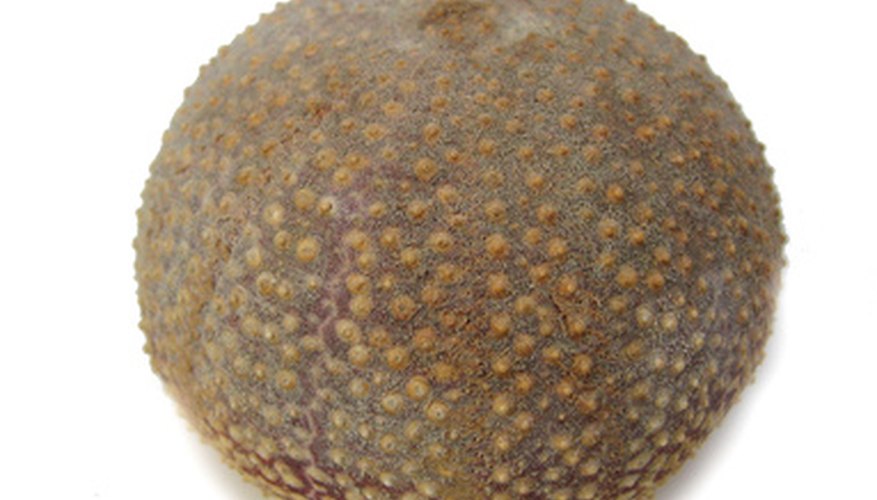Sea urchins belong to the phylum Echinodermata. Echinoderms are identified by their spiny skin. Sea urchins have ossicles, or bony plates, which make up the urchin's internal skeleton. Cleaning and preserving an urchin can be time consuming. You'll need to take care in cleaning of your sea urchin, since the shell is delicate and you can easily break it.
- Sea urchins belong to the phylum Echinodermata.
- You'll need to take care in cleaning of your sea urchin, since the shell is delicate and you can easily break it.

Soak your urchin in a bucket filled with alcohol, as suggested by Shell Outlet. Soak the shell for two days, and allow the sun to dry the urchin for a few weeks.
Put on a pair of gloves to protect your hands. Using a scrub brush, gently brush off your urchin's spines.
Locate the underside of the urchin. There will be a small opening. Insert a dental pick within the opening, and remove dead tissue.

Clean the urchin shell in a solution of bleach and water. Combine four cups of bleach with four cups of water. Scrub the urchin with the solution, which will also help remove any remaining odour from the shell. Dry the shell.
- Put on a pair of gloves to protect your hands.
- Clean the urchin shell in a solution of bleach and water.

Coat your shell with a clear nail polish, as suggested by Shell Outlet. Alternatively, you can coat the shell with watered down glue.
TIP
Don't take live specimens for your collection. A live urchin can move its spines, and will have a vibrant colour. You can use mineral oil to coat the exterior of the urchin, which will give the shell a nice sheen.
WARNING
Never collect sea urchins in protected beach areas. The ecological system can become imbalanced if you remove urchins from protected areas. Don't remove an urchin shell if you notice an egg pouch underneath it. This urchin is still alive.
